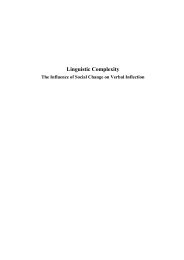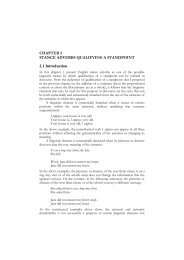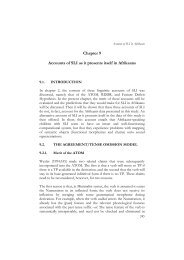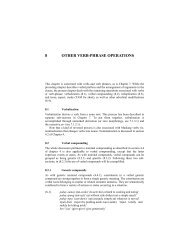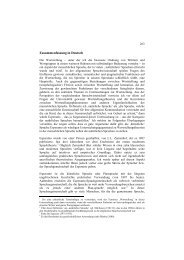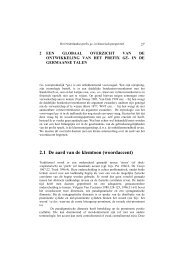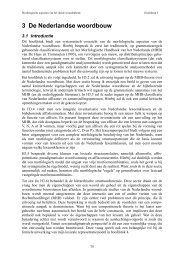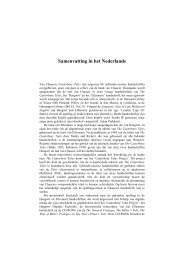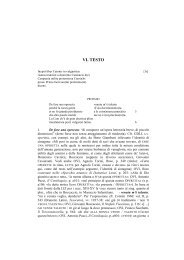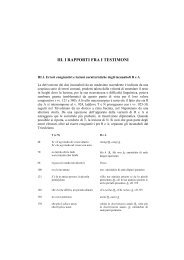Linking elements in compounds - LOT publications
Linking elements in compounds - LOT publications
Linking elements in compounds - LOT publications
Create successful ePaper yourself
Turn your PDF publications into a flip-book with our unique Google optimized e-Paper software.
SIMILARITY OF PLURAL ENDINGS AND LINKING ELEMENTS<br />
the words-and-rules theory (P<strong>in</strong>ker, 1999) because both exclude the occurrence<br />
of regular plural nouns as modifiers <strong>in</strong> <strong>compounds</strong>. 12<br />
Another important f<strong>in</strong>d<strong>in</strong>g is that the speakers from Friesland (i.e., the<br />
Northern region <strong>in</strong> this study) did not tend to show a difference <strong>in</strong> their<br />
pronunciations of the plural -en and the l<strong>in</strong>k<strong>in</strong>g en, while such a pronunciation<br />
difference is typically assumed for the Frisian language (Hoekstra, 1996). It is<br />
certa<strong>in</strong>ly possible that these speakers might only show such differences when<br />
speak<strong>in</strong>g Frisian and not when speak<strong>in</strong>g Dutch (Hanssen et al., 2011b). The<br />
present study shows that Frisian speakers seem to adapt their grammar when<br />
speak<strong>in</strong>g Dutch.<br />
One region of the Netherlands was found to behave quite differently from<br />
the other regions. The speakers from the Southern region (i.e., Limburg)<br />
showed no difference whatsoever <strong>in</strong> the realization of the en <strong>in</strong> phrases versus<br />
<strong>compounds</strong>, while the speakers <strong>in</strong> the other regions showed greater n-<br />
realization <strong>in</strong> phrases than <strong>in</strong> <strong>compounds</strong>. The speakers from the Southern<br />
region of the Netherlands also did not show a preference for the use of [ə] or<br />
[ən] <strong>in</strong> either phrases or <strong>compounds</strong>. These speakers showed approximately<br />
12 Van de Velde and van Hout (1998) dist<strong>in</strong>guish three right-hand contexts that affect Dutch [n]deletion:<br />
a vowel, consonant or pause. Our study used only consonants as right-hand context<br />
thus we cannot compare our results with van de Velde and van Hout (1998). However, de Wulf<br />
and Taeldeman (2001) zoom <strong>in</strong> on two groups of consonants that affect Dutch [n]-deletion (see<br />
2.2.2, ‗Stimuli and design‘): the consonants t-, d-, b-, or h-, and other consonants (not t-, d-, b- or<br />
h-). When we <strong>in</strong>clude these two groups of consonants <strong>in</strong> our statistical analyses (a l<strong>in</strong>ear-mixed<br />
effect model with a logit l<strong>in</strong>k function, with subject and word as crossed random effects,<br />
Condition, Region and Phonological context as <strong>in</strong>dependent variables, and the [n]-realization<br />
scores as the dependent variable), we found a marg<strong>in</strong>al ma<strong>in</strong> effect of Phonological context (β =<br />
0.51, z(3181) = 1.76, p < .1), a significant <strong>in</strong>teraction between Region West and Phonological<br />
context (β = 0.92, z(3173) = 2.30, p < .05) and a marg<strong>in</strong>al <strong>in</strong>teraction between Region South and<br />
Phonological context (β = 0.64, t(3172) = 1.78, p < .1). However, the results were not always <strong>in</strong><br />
the expected direction on the basis of the predictions of de Wulf and Taeldeman (2001). These<br />
results h<strong>in</strong>t that the right-hand consonant plays a role <strong>in</strong> our data for speakers of some regions.<br />
Future studies should <strong>in</strong>vestigate this <strong>in</strong>terest<strong>in</strong>g question <strong>in</strong> more detail. Surpris<strong>in</strong>gly, the<br />
differences between nouns and <strong>compounds</strong> completely disappear when <strong>in</strong>clud<strong>in</strong>g phonological<br />
context <strong>in</strong> the analyses (β = 0.37, z(3186) = 1.49, p = .14), <strong>in</strong>dicat<strong>in</strong>g that speakers pronounce<br />
both categories identically.<br />
49



